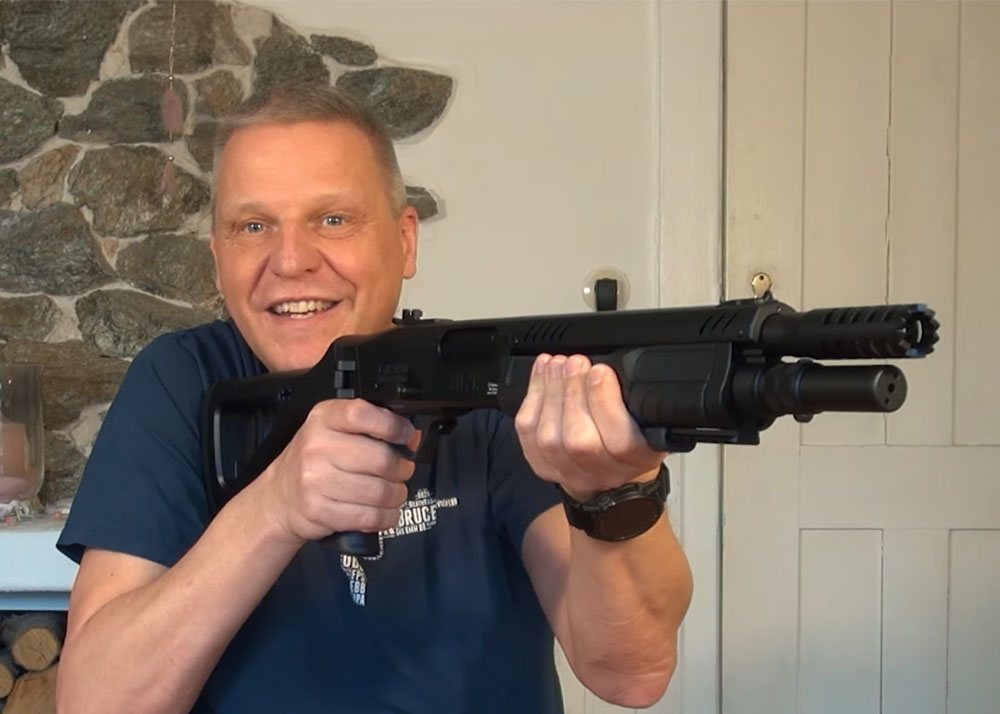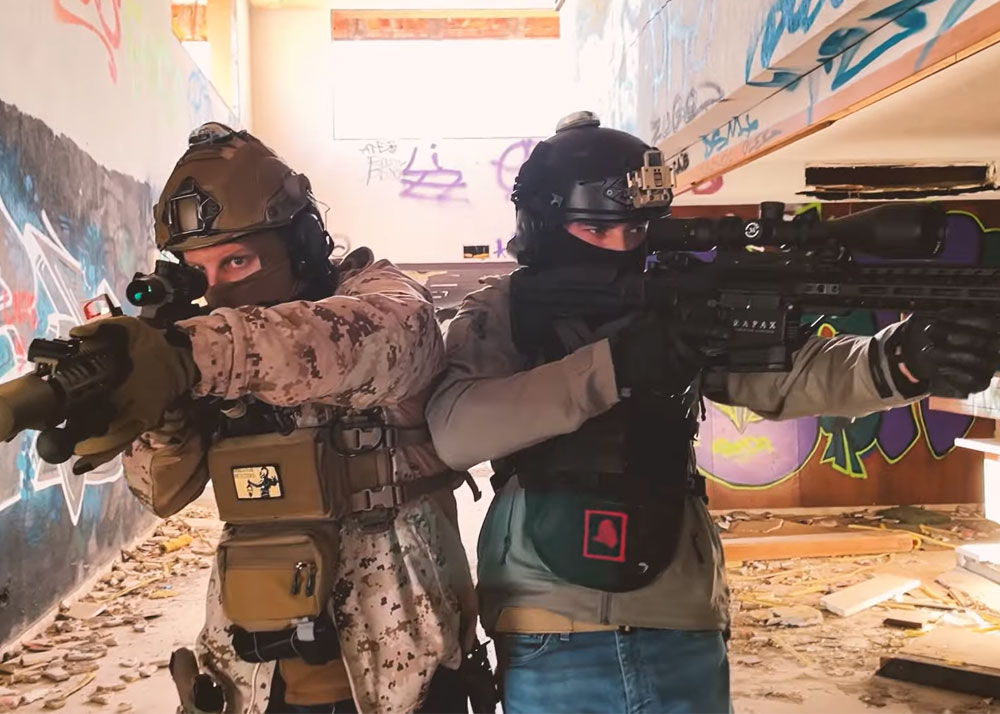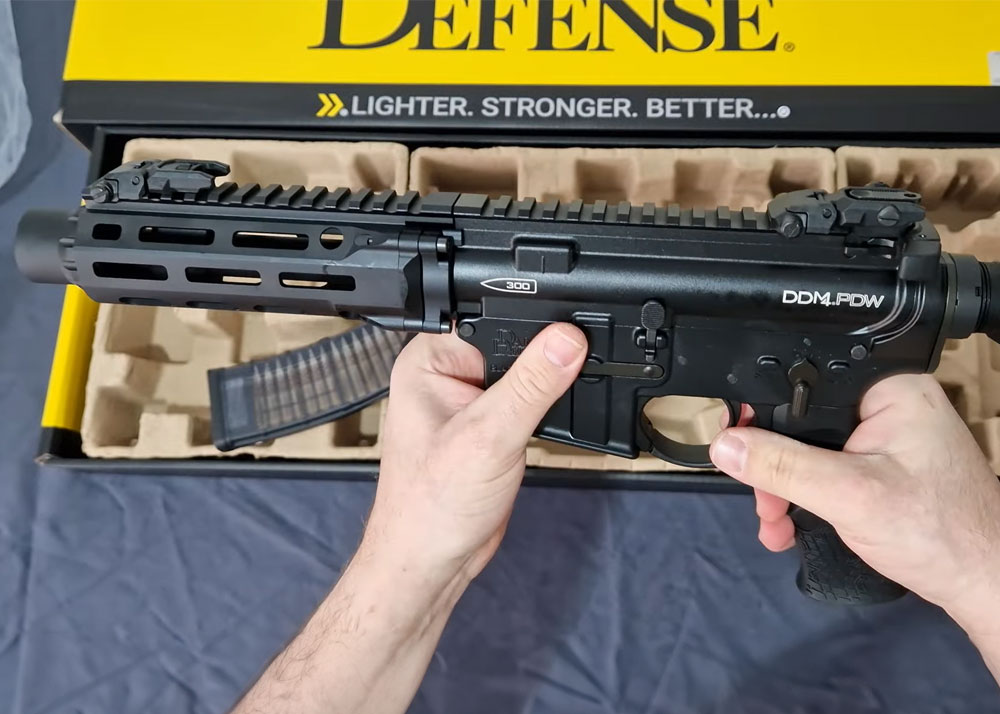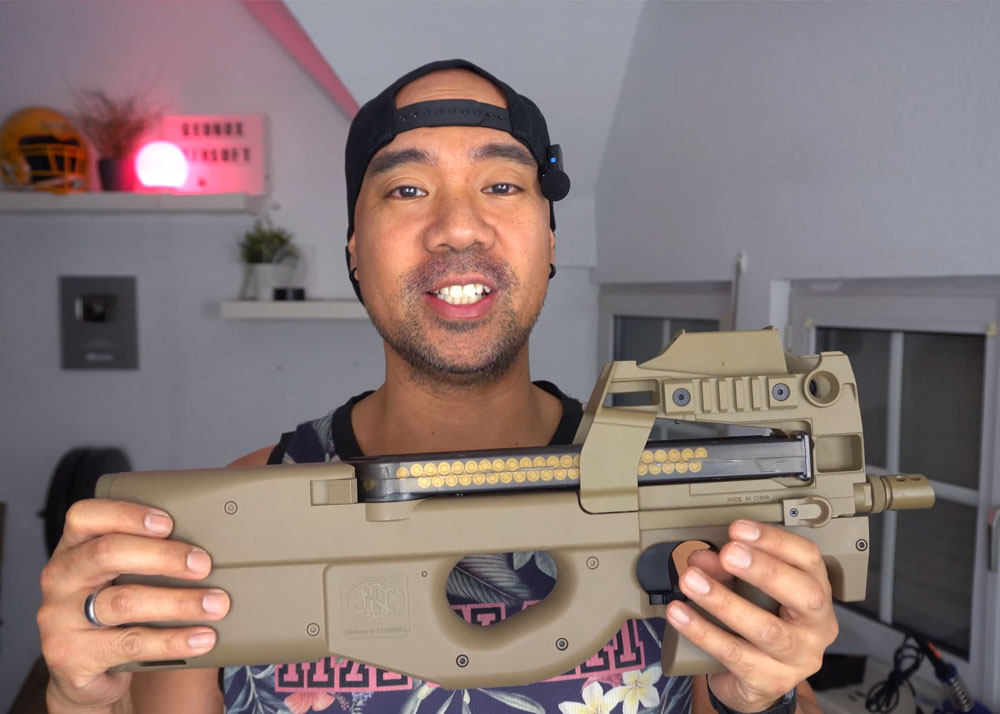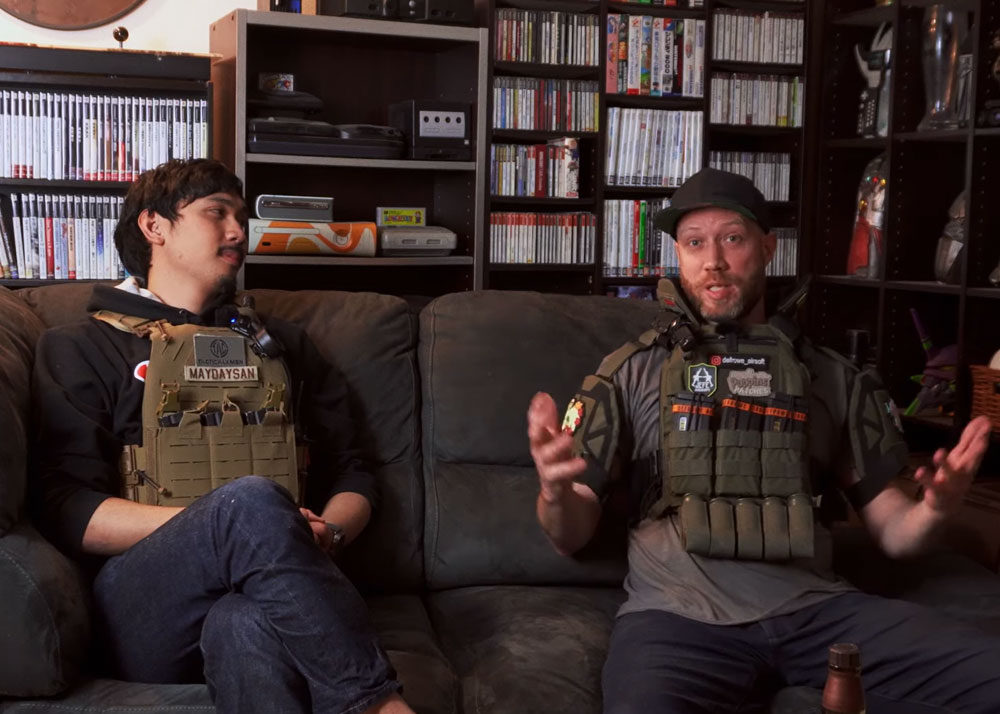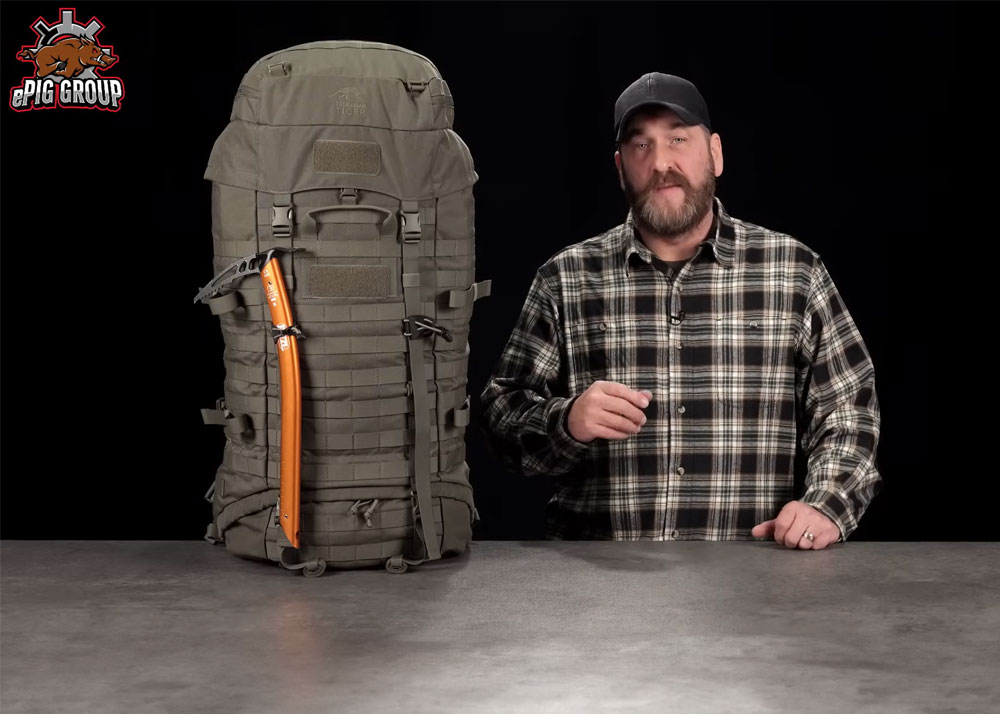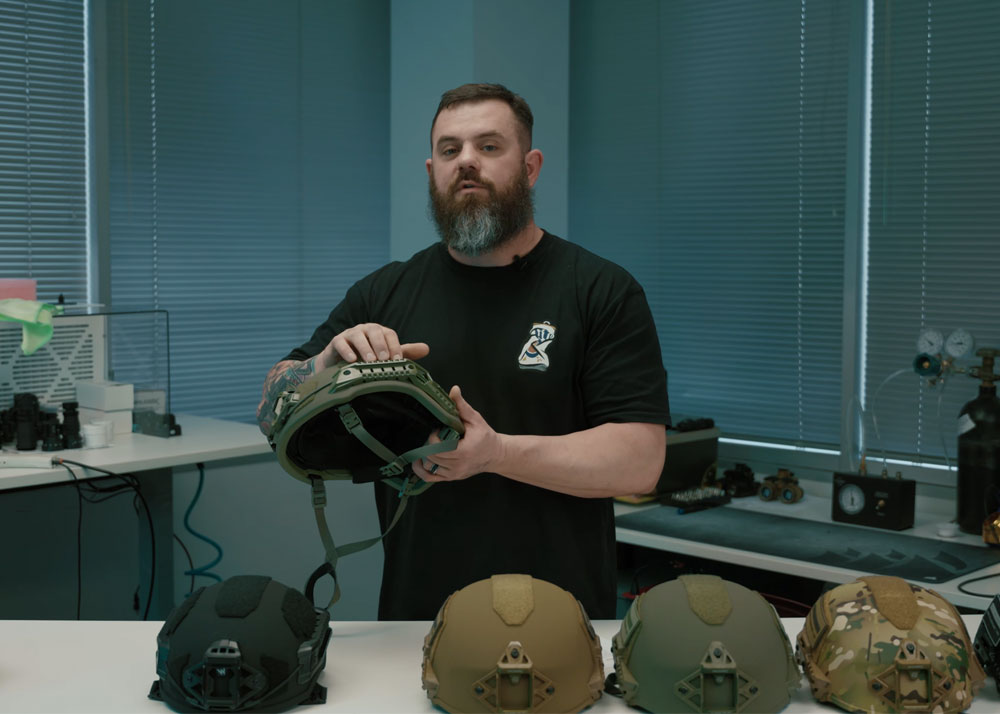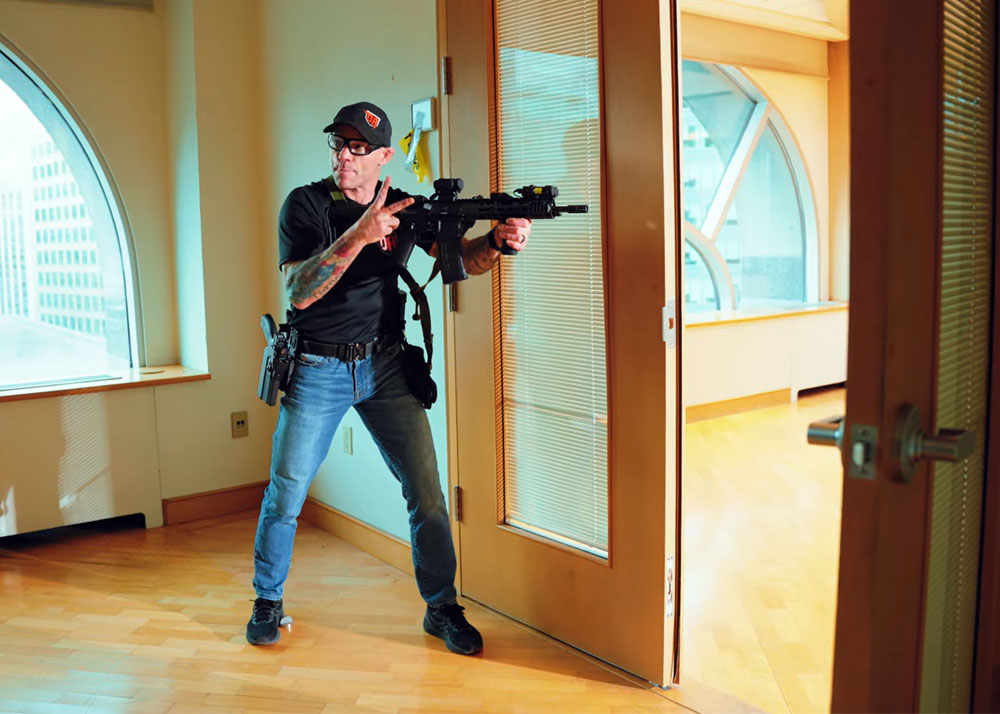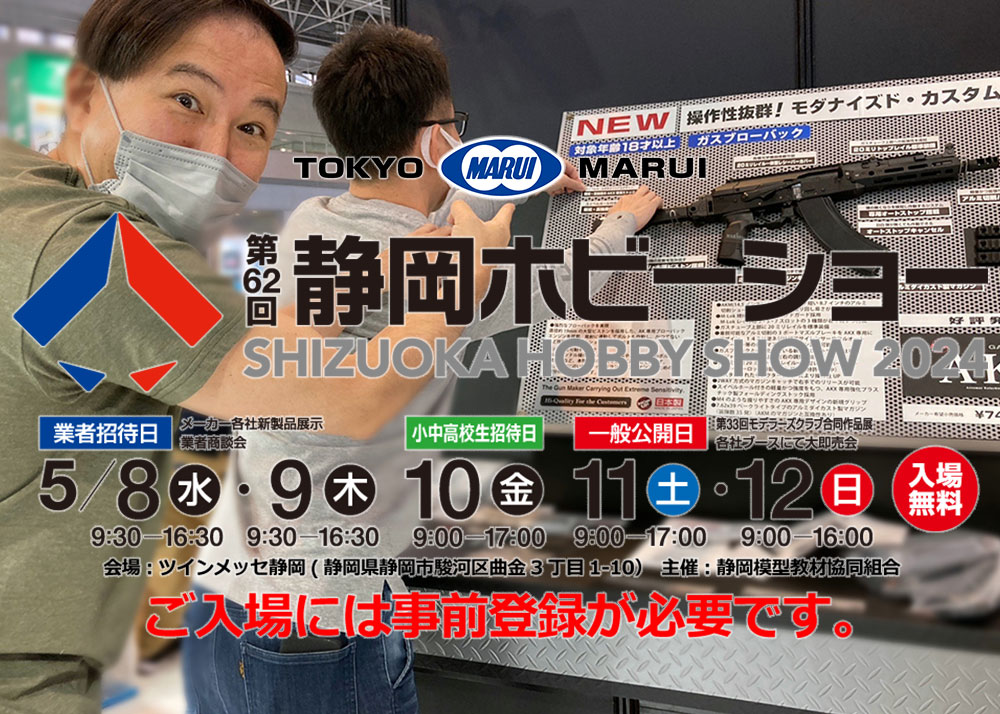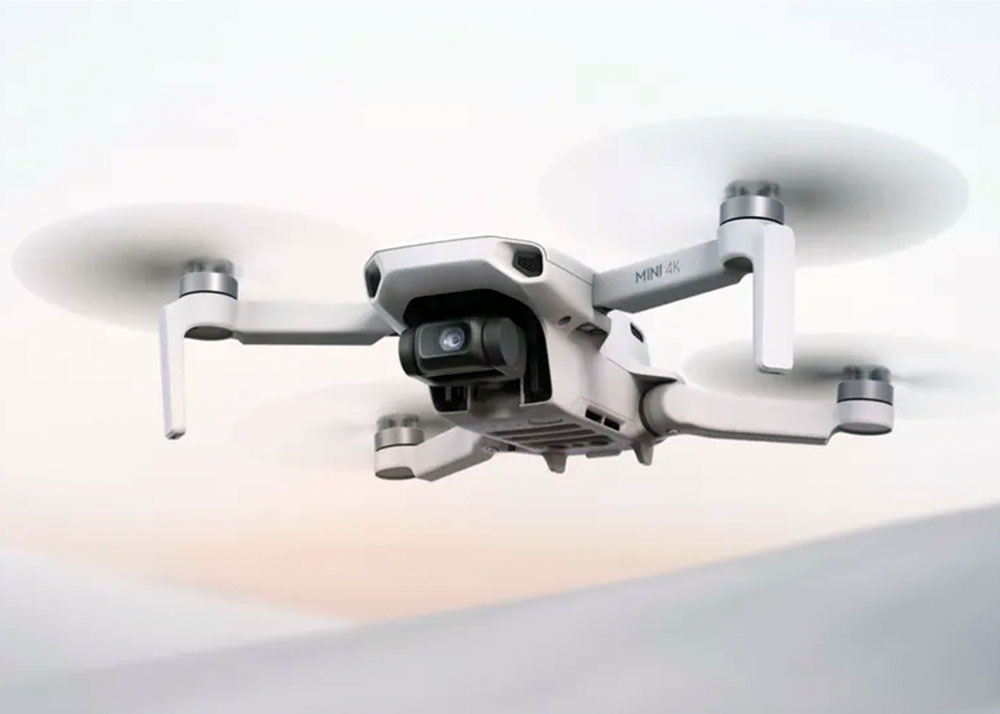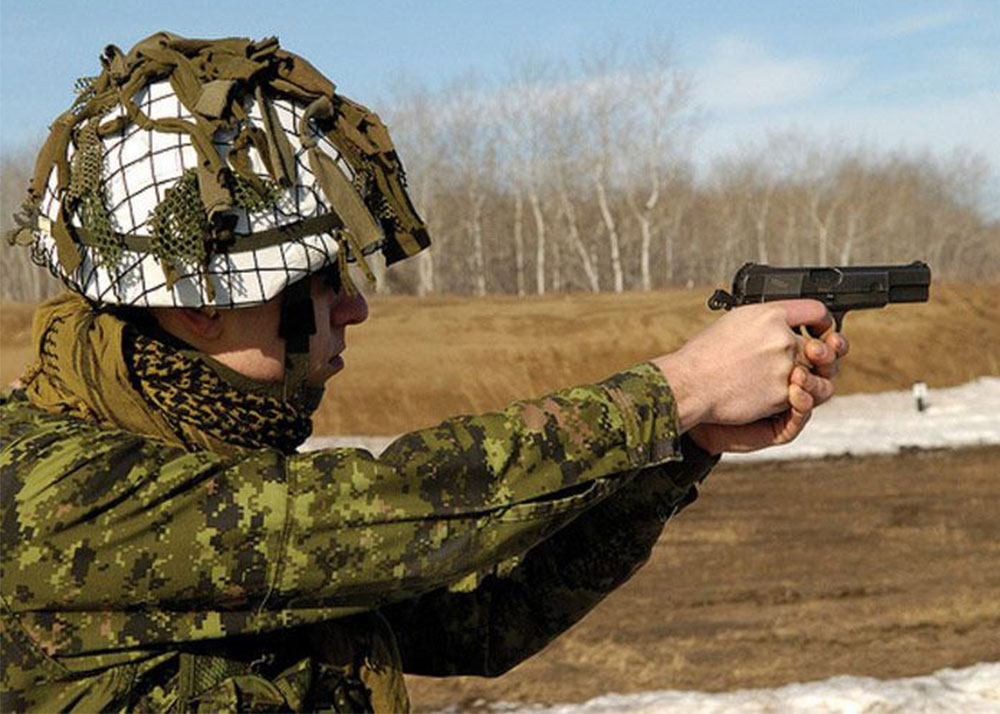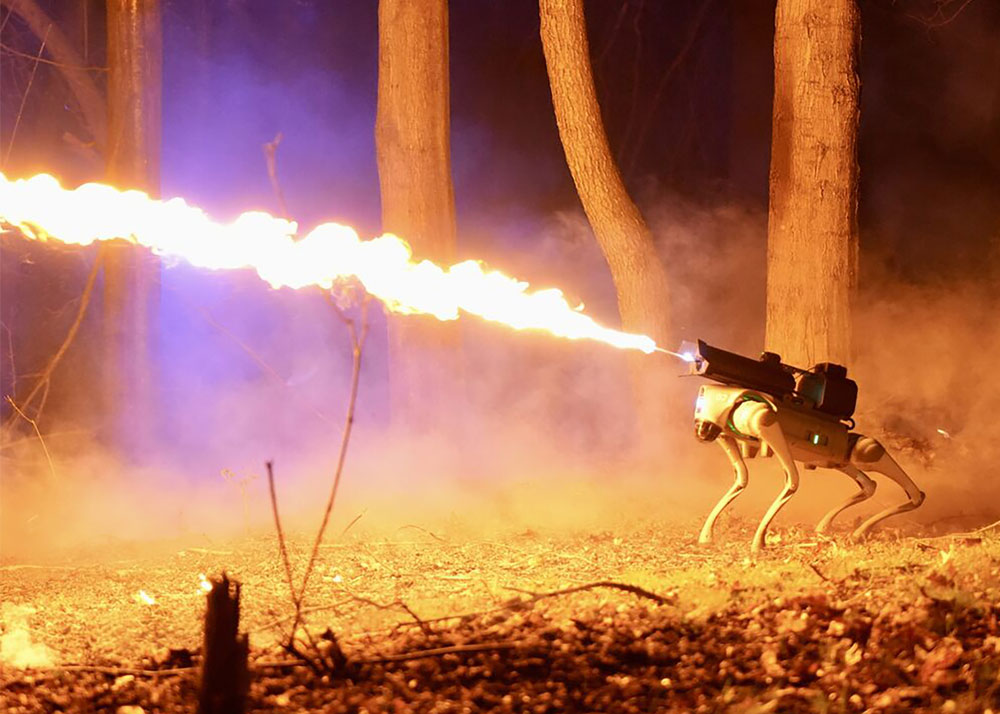Jing Gong BAR 10 G-Spec
Master Chief
23 Jul 2009
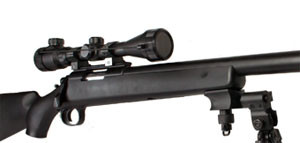
The Jing Gong BAR 10–G Spec is an exact clone of the Tokyo Marui VSR 10 G Spec. The VSR 10 itself, from what I have gathered, does not have a real steel counterpart, although it is modelled after the Remington M700. The rifle is packaged impressively in a medium-sized brown box. By merely looking at the size of the box you know that the rifle will need to be assembled. Upon opening the box, the rifle lies in two major pieces, the stock and the rifle assembly itself.
All tools needed to assemble the rifle are all included in the pack. Also included is a very nice 3-9x 42 sniper scope with lens covers, 30-round capacity magazine, a speed loader, cleaning rod, scope rail and magazine release catch assembly.
Assembly is a breeze. The only part where I struggled is with the magazine catch assembly. As I am not quite into sniper rifles, I decided to hand the rifle over to Albert, who is one of our dedicated members at FILCOMBAT and STAG UK, to do the review to avoid any bias that I might have against sniper rifles.

Below is his review:
Being shrouded in black bin bags and fully assembled, Master Chief handed over to me this rifle for review. The first thing I noticed upon holding this was that the rifle is a bit light to my liking. Being a user of JG M4S and the much heavier Army L85, I find this rifle to be easy on the arms and highly manoeuvrable.
EXTERNAL AND BUILD QUALITY
I shall describe in detail the parts from the upper half of the rifle starting from the attached suppressor down to the fire selector. The supplied suppressor is made of metal and is finished in matte black paint. Unlike its Tokyo Marui counterpart, this one is devoid of any markings. For an airsoft spring rifle, this suppressor is more of an aesthetic feature rather than technical. The sound produced by a BB exiting a barrel is very minimal to be heard from a sniper’s location relative to its target. The more prominent sound comes from the cocking action of the bolt and when you fire it. This sound can not be suppressed. With the suppressor length at 190mm, excluding its male thread, this could be used to upgrade the existing inner barrel length of 302mm to up to 490mm. You will have to use an M14-length with a little sawing off. This will make a considerable improvement on its range and accuracy.
Next is the metal outer barrel with an exposed length of about 456mm and an external diameter of 30mm. This is screwed to the receiver and is held securely by a grub screw at the top and another screw at the bottom. This also has the same finish as the suppressor in matte black. The thread for the suppressor attachment is 16mm, counter-clockwise. Unfortunately, there is no known suppressor make that do this size. This could pose a problem if you are planning to mount another type of suppressor.
Inside the outer barrel sits comfortably a 302mm-long brass inner barrel with an inner diameter of 6.03mm, as per caliper reading. Jing Gong is known to use tight bore barrel in their guns and the BAR is no exception.
The HOP-up is of slide type which I reckon should be upgraded for better accuracy and range. It is made of plastic with a metal slider. The bucking is made of ordinary rubber. The adjustment is external which is very handy though it is a bit fiddly with the sliding lever protruding minimally. There is no marking as where the (+) or (-) adjustments are but I found this to be (+) to the back and (-) to the front direction. HOP-up is only one of the three markings that you will find on this rifle with “MADE BY JG WORKS” and “MADE IN CHINA” the other two. Unlike other guns in the market, JG opted to have these markings embossed as opposed to painting, engraving or the more costly laser etching.

The receiver is made of metal just like the rest of the upper part of the rifle. An opening is prominent on the right side which is copied from the real deal. This is the part where you manually load a single bullet each time you cock the rifle. This opening, however, exposes the bright chrome plated cylinder. Being lubricated, this could attract a lot of dust and other foreign materials including rain that could impair the smooth operation of the rifle. This could also give away your position albeit only from the right side. A seasoned sniper could easily rectify this problem.
Screwed directly unto the top of the receiver is the scope rail which is made of metal just like the TM version. The similarity stops here, for with Jing Gong, they have included a modest 3-9x40mm scope which is illuminated in red. This is attached to the rail with the included 2x25mm scope mounts. The scope is a very big plus since it could cost you around £40 when bought on its own without scope mounts. The magnification is well suited in sites where short to medium range sniping is possible.
At the back of the receiver lies the bolt handle which looks exactly like the TM version. It is made of metal and easy to operate. I sprayed silicon grease to the cylinder to enable a smoother and minimal clank sound when cocking. Sitting behind it is the fire selector with markings F for fire and S for safe. The bolt can be cocked even if it is on safe position but the trigger can not be squeezed.
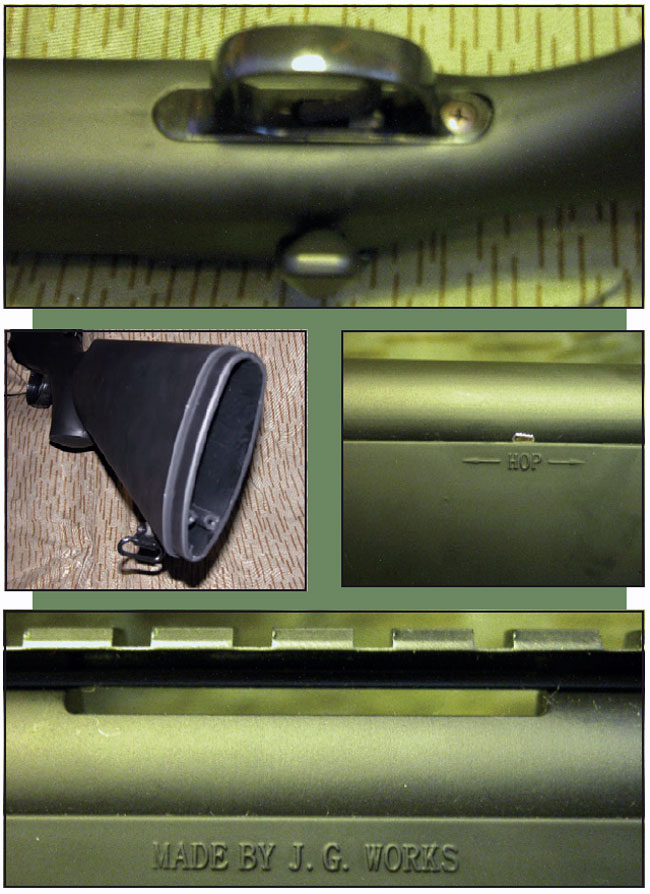
Let us now go to the lower half of the rifle which is mainly made of ABS plastic. It is finished in matte black rubbery texture which is of good quality.
The first part is the front sling swivel which is made of metal and is shiny. It swivels back and forth but it does not rotate. A bi-pod could be attached in lieu of this.
A little further down is the magazine with the release button on the front. The magazine is located in between the two hex screws that join the stock and upper receiver together. I found out that the magazine does not click into place by a simple straight push into its well. I needed to push hard on the front end where the magazine catch is located to firmly engage the magazine catch.
Next down the line is the metal trigger with a plastic trigger guard. The trigger is of good build and quality. It takes less effort to squeeze the trigger resulting in a minimal movement on your aim when shooting. The trigger guard is finished in shiny black colour standing out in contrast to the matte finish of the plastic body to where it is attached. There is enough room for the shooting finger even if you are wearing thick gloves during winter games.
The last but not the least is the stock which is an integral part of the one piece ABS plastic body. The stock is hollow, as shown in the photo, upon removal of the plastic butt plate. This void could be used as storage or additional weights could be added to make the rifle heavier. I would suggest using sand in a pouch or lead securely fastened inside it. If you do not like the hollow sound to it once tapped, you can fill it up with expanding foam, which is readily available from any DIY shops.
INTERNALS
The brass nozzle and cylinder head is of one-piece construction. This is screwed to the cylinder. The piston and piston head is also of one-piece construction. It is made of plastic as well as the spring guide. The stock spring is slender compared to an AEG spring. This is the item to be upgraded if you want a more powerful rifle. You should upgrade also the piston/piston head and the spring guide. The rest could stay as is.
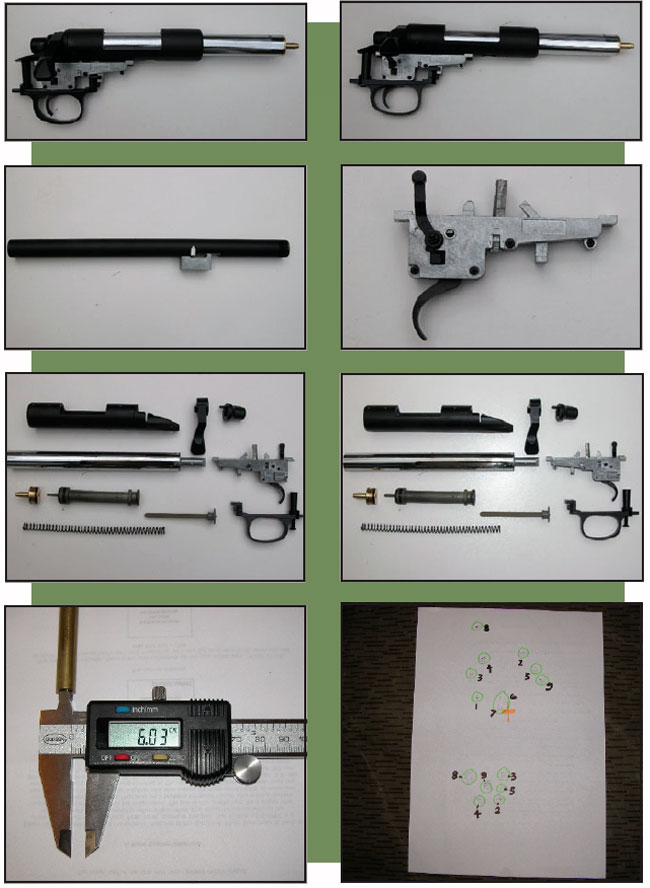
FIELD TESTING
Due to the prevailing windy conditions, I was only able to make use of an undisturbed distance of 10m for the testing. I found the best HOP-up adjustment at the middle of the slider. Using 0.20g BBs, the average chrono reading from 5 shots was 387.6FPS. The highest reading was 397FPS and the lowest was 373FPS. This was done with the HOP-up at the middle. The power of this rifle is well within the Sniper Rifle specs of most UK skirmish sites.
To be consistent on my field testing, I clamped the rifle to a workmate and zeroed in the scope. The result was inaccurate due to occasional misfeeding of BBs. Sometimes, two BBs would shoot out disturbing my procedure. After several magazines, I gave up. The numbers indicated on the paper target was based on the shots taken. If there is a single number on the target, it was a good shot. If there are two identical numbers, it means that two BBs hit the target at two different locations. There was an instance when a surge of BBs went into the barrel in one cock. Some went into the void space left when the cylinder travels backwards when being cocked. The hole provided on the lower receiver is probably for removing BBs that go astray inside the receiver. Once this happens, you can not cock it properly. You have to remove all the BBs through the hole and re-insert the magazine. Expect to shoot 4 to 6 BBs at a time when you squeeze the trigger. I recon that this is an
isolated case and can be easily rectified. The offending part could either be on the magazine or the BB feeding mechanism on the receiver.
WHAT I LIKED…
Overall, the rifle is of good build and the quality of workmanship and finish is superb. With the included scope, it is a great value for money for aspiring snipers.
WHAT I DID NOT LIKE...
Magazine insertion, which is not straight forward and the fiddly HOP-up adjustment.
WHAT I WOULD UPGRADE…
- Longer inner barrel until the suppressor.
- Replace the plastic HOP-up assembly with a better quality one.
- Piston/piston head for a better quality.
- Spring for more power and greater range but should be site legal.
WHAT I WOULD FURTHER DO...
Make a camo paint job on the whole rifle including the scope and suppressor.
I shall rectify the misfeeding problem and the magazine catch.
PARTING SHOTS…
Beware of flying spring and small bits when messing around with the magazine release button from inside the ABS plastic body and the HOP-up assembly. These are easy to lose and difficult to replace. Do not over tighten the screw in front of the magazine release button when joining the upper and lower rifle assemblies. This causes the magazine catch to be jammed and thus will not hold the magazine in place.
If I have to rate this rifle, I would give this an 8/10.
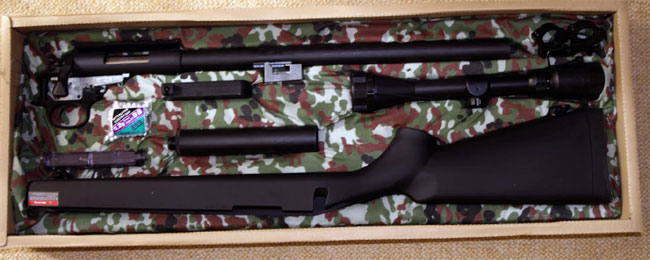
Note: BB feeding problem was resolved after re-assembly of the magazine locking system.
Special thanks to Phil and Greg of Elite Airsoft Essex for providing us with the rifle for review.

